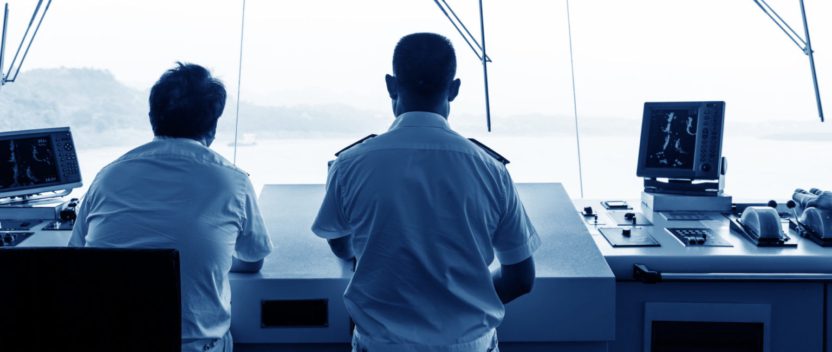An ECDIS in the engine room?
The development, adoption and ratification of the IMO Ballast Water Management Convention has been an object lesson in regulatory risk. Ratified in 2016, some 14 years after it was adopted, it will herald a step-change in management of invasive marine species carried in ballast water.
For ship operators however, the decade and more of uncertainty around BWM has not come to an end. Though entry into force was expected to begin on a rolling basis one year after ratification, it may be further delayed. In the meantime they must continue to grapple with unquantified impacts of a piece of rulemaking that has ominous parallels with the mandation of ECDIS.
At the time the BWM Convention was adopted, no technology existed that could meet the proposed treatment standards. As a result, few if any member states were prepared to ratify, which meant few owners were prepared to install systems even though OEMs were keen to develop them.
IMO Type Approval was gradually granted to a number of systems but the United States, fearing the IMO standards were too lax, developed its own much tougher requirements, which as of mid-November 2016 no OEM has been able to meet. Its mistrust appeared well-founded when some IMO-approved systems turned out to have patchy performance.
As a result, with the Convention ratified, ship owners and operators find themselves confronted with a piece of mandatory equipment they must install within a few years but which many believe may not perform to the standard required, but still generate a massive Capex bill as well as increased Opex and crew training requirements.
Captain David Taylor, General Manager, Ship Management, Shell International Trading and Shipping Company Limited spelled out the challenge to a seminar hosted by The Marshall Islands flag. Capt Taylor was the model of reasoned argument, but there was little need to read between the lines in order to understand the challenges.
“This is a costly exercise, with installation and procurement costing around $2-3m per ship, a large fleet like ours means a $100m bill. We cannot afford to get this wrong,” he said.
But given the uncertainties, it is proving difficult to have a rational discussion with owners or persuade them “to install something that maybe doesn’t work or doesn’t meet the requirements or is subject to the varying interpretation of port state control agencies going forward”.
Shell, he said, “needs to be really sure that what we’re going to do will meet the requirements”.
Installing Ballast Water Treatment (BWT) systems on an estimated 60,000 SOLAS ships will be a huge volume of work, calling for front end engineering and long lead procurement, despite the unknowns around implementation, equipment selection, installation and in-service operational challenges.
The revision of the critical G8 Guidelines to the Convention at the recent MEPC 70 meeting has provided some more clarity but Taylor said there was still not enough certainty on implementation schedules or testing requirements.
Some flag states have promoted the idea that the renewal of the IOPP Certificate – the trigger for a system to be subsequently installed could be ‘de-coupled’ from other surveys to spread the load. For an operator with ships flying numerous flags this is little help.
Beyond the regulations, equipment selection and installation poses major dilemmas. In a perfect world Shell would only make such a large Capex decision based on a rigorous selection process, selecting a preferred system from an established supplier with a strong financial position and commitment to maritime market. “Do all [BWT] providers in the market fall into that category? I don’t think so,” he mused.
Shell would also look for proven reliability across ships of all sizes and particularly for the larger vessels with higher discharge rates. The programme of land-based BWT system testing, from which systems will be scaled up for use at sea poses the questions of how well they would perform in practice.
“Is that really going to work? I don’t think so. We would normally look for high quality test results from the Type Approval process to make sure we meet the requirements and this is an area of uncertainty. There are lots of unknowns around selection and we are asking owners to dig deep into their pockets in a harsh economic climate,” he added.
Other installation challenges include the engineering required in place and commitment to surveys during construction, in some cases installing system connections with no certainty on the shape of the final system.
There are question marks too around the durability of components and software as well as compatibility with other systems onboard, of the effect on power requirements and ancillary systems and the ballast control system itself. It was not yet clear he added, whether dry docking would be necessary to perform installation and if so, whether there would be enough capacity available.
In terms of in-service challenges the primary one is the threat to efficiency that BWM poses. “One of the areas we have worked hard on is gaining value on port turnaround times. Is that all going to be thrown awry if the system capacity doesn’t match the port turnaround time and we’re left taking up valuable berth space?”
Shell has some smaller newbuilds with systems installed which he says have performed well but says an installation on a larger tanker has had operational issues. The company is ‘still trying to understand’ maintenance intervals and the training burden operation of the system will put on its seafarers. Tanker owners are used to shipping dangerous cargoes but handling and storage of chemicals onboard is different, he added.
“We are in a very cost competitive market with many external pressures and what additional Opex this will create is a question that still needs to be answered. These are the issues and challenges we face – and that each and every owner and manager will have to go through in a short period of time.”


